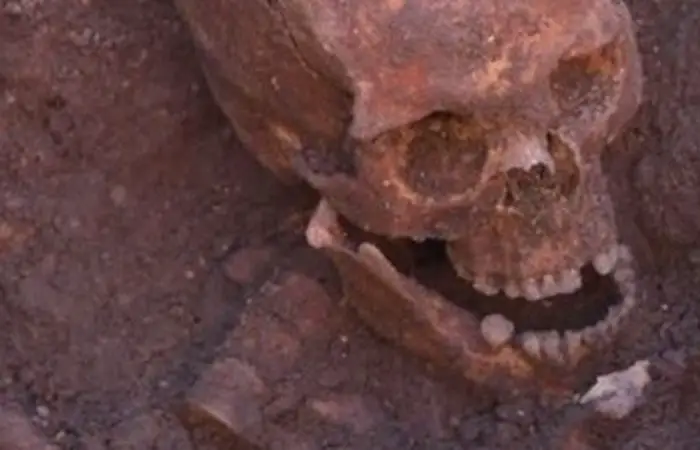Richard III discovered in Leicester car park NEWS

Legend had always told that King Richard's body was hurled into a river after a humiliating defeat at the Battle of Bosworth Field in 1485...it seems that this was not the case!
The legend had always told that King Richard's body was hurled into a river after a humiliating defeat at the Battle of Bosworth Field in 1485...it seems that this was not the case!
The skeleton found beneath a Leicester car park four years ago has been confirmed as that of English king Richard III after rigorous testing. Experts from the University of Leicester said DNA from the bones matched that of descendants of the monarch's family alive today.
Lead archaeologist Richard Buckley, from the University of Leicester, told a press conference to applause: 'Beyond reasonable doubt it's Richard.' The remains will now be reinterred in Leicester Cathedral. Dr Jo Appleby, an osteo-archaeologist from the university's School of Archaeology and Ancient History, revealed the bones were of a man in his late 20s or early 30s. Richard was 32 when he died. His skeleton had suffered 10 injuries, including eight to the skull, at around the time of death. Two of the skull wounds were potentially fatal.
The dig initially came about on the hunch of Philippa Langley from the Richard III Society. After doing her own research as part of the preparation she made for writing a screen play, Ms. Langley became sure that the site on which the car park stood had all kinds of secrets buried beneath. The funding was secured to begin initial excavations of the site which was believed to once be Greyfriars Church was demolished during the Reformation in the 16th Century.
Over the subsequent centuries its exact location was forgotten. Richard III was famously vilified by William Shakespeare in his play of the same name. The legend grew of a deformed and weak king with a shrivelled arm and a hunched back. He was considered responsible for the disappearance of the two 'Princes in the Tower' his young nephews who held a right to the throne he protected on their behalf. Public opinion of the king in the 15th century certainly wasn't good. It seems his burial was simple and without ceremony in a grave he didn't fit and his post mortem injuries implied very little respect for the king of England.
The DNA evidence from one of King Richard's teeth was matched to a Michael Ibsen...a seventeenth generation descendent of king Richard's sister a Canadian, living in London. The evidence seems irrefutable. The Scoliosis of the skeleton's spine matching evidence of King Richard's condition, yet no withered arm and other deformity which may indicate that much of which historians think they know about Richard is now in dispute. Maybe one day, with the help of the remains, the truth will out.
#u-GBelAVerdqs-u#

 Popular
Popular Recent
Recent Comments
Comments

















